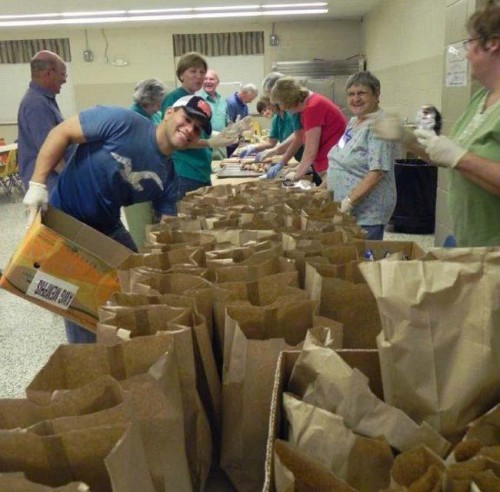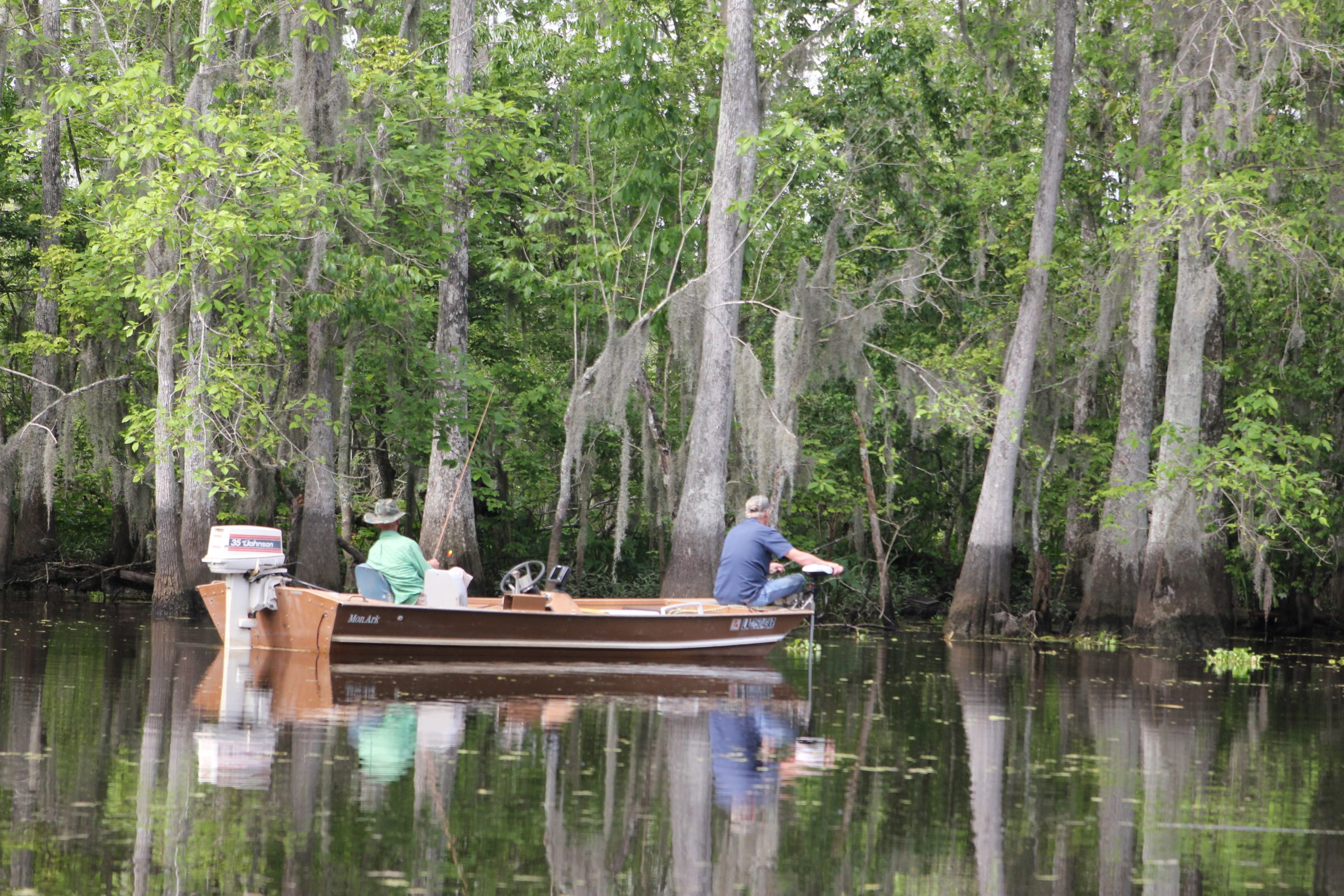
Matthew 25 rallies to thank the Guard
May 27, 2011Tuesday, May 31
May 31, 2011U.S. Sen. Mary Landrieu believes it is time for the federal government to finish shoring up the Atchafalaya Basin, which would include constructing a permanent flood control structure in Bayou Chene.
“Now is the time to step up, dig deep and find the money and the resources,” she said. “So when the water rises like this again, we can have a lot more assurance that any flooding will be minimized.”
Landrieu made her comments while in Morgan City, where she viewed a backwater flood control barge structure in Bayou Chene, surveyed flood prevention plans and met with St. Mary Parish Levee Board President Bill Hidalgo, Town of Berwick Mayor Louis Ratcliff and Morgan City Mayor Tim Matte.
The senator praised parish leadership for their efforts and said they had done an outstanding job during the past two weeks in preparation for expected flooding.
Landrieu credited design efforts in the barge flood control structure, which was positioned to slow down volumes of backwater flooding into St. Mary, Terrebonne, Lafourche, Assumption, St. Martin, and Iberville parishes.
Hidalgo told Landrieu that he has designs for a permanent system, which would include a series of levees and carry a $60 million price tag.
“In the scheme of things, $60 million is really not that much money. I’m sold,” Landrieu said.
“We have to work on a permanent solution to this problem in the basin, and this apparently you guys think this is it.”
Landrieu said the Mississippi River Tributary System is a project that has been under construction since the Great Flood of 1927. The Atchafalaya River is a tributary of the Mississippi River.
“After this event is over, it is going to give us a great opportunity to take an assessment of the parts of Mississippi River system that are not yet complete,” Landrieu said. “Although 88 percent is complete and working happily as designed, we believe 12 percent is not. And that’s what I plan on focusing my attentions on, and then, making them known in Washington.”
Landrieu said taxpayers had spent $13 billion since 1927 on the Mississippi River Tributary System, and stressed that it had offered a savings of more than $300 billion in return by preventing property losses.
“We need to spend additional monies, take temporary structures down, and make them permanent,” Landrieu said. “As we all know, it is going to be tough to get the money. We’re running debts and deficits. But, we have a levee deficit and a protection deficit in Louisiana.”
Landrieu said it is certain that flooding will happen again in the future, and because of that it is important to be prepared.
Matte gave Landrieu his wish list, which is to solve all of Morgan City’s backwater levee problems.
“For the most part, we’ve had to face backwater issues throughout the years, only during hurricane season,” he said. “Now, backwater is an issue because of the increasing spring snow melt.”
According to Matte, a permanent structure in Bayou Chene would solve that problem, but federal funds would be needed to raise backwater levees.”
Hidalgo explained that a major problem for the lower Atchafalaya Basin, has been silt. “Our port commission fights every year to get $10 to $12 million, to dredge this area, because of the siltation,” he said. “Islands have popped up all over. It’s a growing delta, a beautiful delta, yet, it’s trapping this water, and the water has nowhere to go. No one is looking at our flood plain area.”
Hidalgo blamed silt as the cause for not being able to get a larger navigation channel.
The backwater barge control system stretches from Avoca Island at Morgan City, across to Terrebonne Parish, in what is known as Tabor Canal, a tributary of Bayou Chene.
Hidalgo said the temporary system is wired with satellite radios, allowing the levee district to track the movement of the water as nature tries to push it past the control system. “In 30 to 40 days, we’re going to have more information, to create a permanent workable solution,” he said.
Hidalgo and Matte called on Landrieu for her assistance in allowing the temporary structure to remain in its present position through hurricane season.
Hidalgo said the U.S. Army Corps of Engineers issued a permit that allowed the temporary barge system, but noted that it may only remain in place through the pending flood event.
“Get me something that says in writing, all of the neighboring parishes are in agreement of this system,” Landrieu said, “and don’t rip up anything…unless you talk to me.”
Landrieu said she would like to see Louisiana secure $500 million to $1 billion a year for projects such as flood control systems. “I want you guys to be able to show me something that we can show our people that if all hell breaks loose with this water, they are going to be protected. This includes the Morganza Spillway open to the fullest capacity possible in the Atchafalaya River, and the Bonnet Carre Spillway open 100 percent,” she said.
Regarding the number of bays to be opened and water flow from the Morganza Spillway, Landrieu said the issue is more about the speed of water released than the amount. “I’ve been told by the corps that the Atchafalaya can hold roughly 600,000 cubic square feet of water. I believe the corps has a goal with this event of 125,000 cfs of water, which is really a quarter of the river’s capacity,” she said.
St. Mary Parish officials laude the effectiveness of a 500-foot barge that was sunk in Bayou Chene to advert backwater flooding. Some have suggested that a permanent structure should be built to better control water flow in the area. MIKE NIXON











